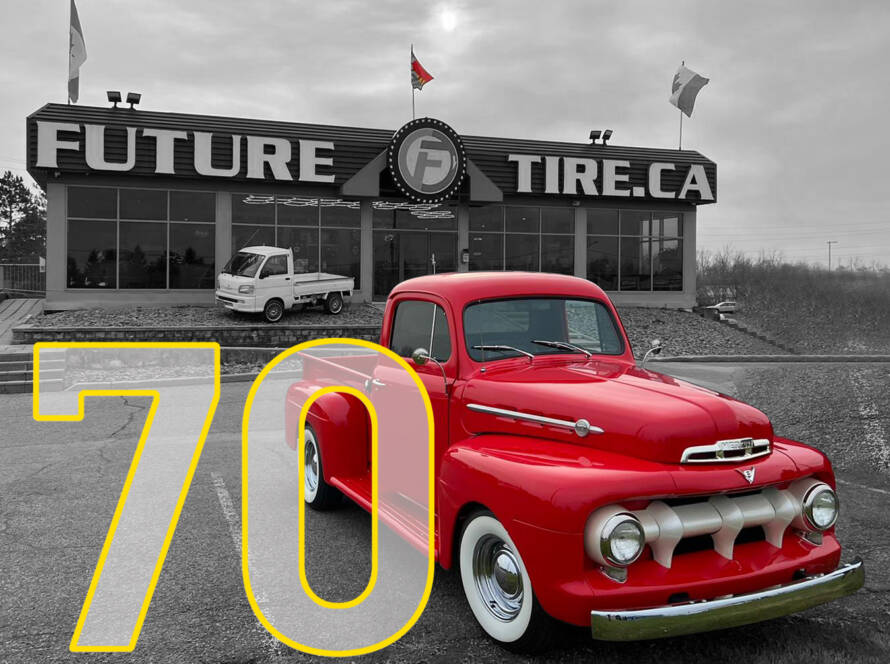Tires are more than just round rubber parts that keep your vehicle rolling — they are complex products designed with specific measurements, safety standards, and codes. If you’ve ever looked closely at your tire’s sidewall, you’ve probably seen a combination of numbers and letters. But what do they actually mean?
In this article, we’ll break down tire numbers and codes, explain their meaning, and give you real examples — especially those common and standard in the Canadian market.
Why Tire Codes Matter
Understanding tire numbers and codes helps you:
- Choose the right replacement tire
- Drive safely in Canadian weather conditions
- Ensure proper load capacity and performance
- Comply with legal and manufacturer specifications
Breaking Down the Tire Code: Example and Meaning
Let’s start with a typical tire code you might see on the sidewall:
Example: P225/65R17 102T
Each part has a specific meaning:
| Code | Meaning |
|---|---|
| P | Tire type (P = Passenger vehicle) |
| 225 | Tire width in millimeters |
| 65 | Aspect ratio (height as % of width) |
| R | Radial construction |
| 17 | Rim diameter in inches |
| 102 | Load index |
| T | Speed rating |
Let’s go through these in detail.
1. Tire Type Code
- P = Passenger vehicle tire (standard for cars, minivans, SUVs)
- LT = Light Truck tire (for heavier loads)
- T = Temporary (spare tires)
- ST = Special Trailer
In Canada, P-metric tires are the most common for personal vehicles.
2. Tire Width (e.g., 225)
- Measured in millimeters
- Indicates the width from sidewall to sidewall
- Common sizes in Canada: 205, 215, 225, 235, 245
3. Aspect Ratio (e.g., 65)
- Represents the sidewall height as a percentage of the tire width
- A lower number = lower profile (better handling)
- A higher number = more sidewall = smoother ride
For example:
- 65 means sidewall height is 65% of 225mm → 146.25 mm
4. Tire Construction (R)
- R = Radial (used in 99% of modern tires)
- D = Diagonal (bias-ply, rare today)
5. Rim Diameter (e.g., 17)
- Size of the wheel the tire fits
- Measured in inches
- Common rim sizes in Canada: 15″, 16″, 17″, 18″, 20″
6. Load Index (e.g., 102)
- Indicates how much weight the tire can support
- You can look up the number on a load index chart
| Load Index | Max Load (kg) |
|---|---|
| 91 | 615 kg |
| 95 | 690 kg |
| 100 | 800 kg |
| 102 | 850 kg |
| 104 | 900 kg |
For example, 102 = 850 kg per tire, or 3,400 kg total for 4 tires
7. Speed Rating (e.g., T)
Indicates the maximum speed capability of the tire.
| Speed Rating | Max Speed (km/h) | Common Use |
|---|---|---|
| S | 180 | Family cars |
| T | 190 | Sedans, SUVs |
| H | 210 | Sports cars |
| V | 240 | High-performance |
| W | 270 | Luxury/performance |
In Canada, T and H rated tires are very common for everyday vehicles.
Other Important Tire Markings in Canada
DOT Code
Example: DOT 4B08 ABC 0923
- Shows the manufacturer, plant code, and date
- Last four digits indicate the manufacture date
0923= 9th week of 2023
Always check this for tire age – tires older than 6 years should usually be replaced.
M+S and 3PMSF (Three-Peak Mountain Snowflake)
- M+S: Mud and Snow – minimum all-season traction
- 3PMSF: Certified for severe winter conditions (mandatory in Quebec from Dec 1 to Mar 15)
If you drive in Quebec, Ontario, Alberta, or any snowy province, look for the 3PMSF symbol for legal compliance and safety.
XL (Extra Load) or SL (Standard Load)
- XL = Can handle higher air pressure and load
- SL = Standard load capacity
If your vehicle manual says “XL required,” don’t downgrade to SL.
Common Tire Sizes in Canada
Here are examples of tire codes often seen in Canada:
| Size Code | Common Vehicle Type |
|---|---|
| P205/55R16 91H | Toyota Corolla, Honda Civic |
| P225/65R17 102T | Ford Escape, Toyota RAV4 |
| LT245/75R16 120R | Ford F-150, Ram 1500 |
| P215/60R16 94T | Nissan Altima, Mazda 6 |
| P235/55R18 100H | Hyundai Santa Fe, Subaru Outback |
Conclusion
Understanding your tire’s numbers and codes isn’t just for mechanics — it’s essential for every driver in Canada. These codes reveal everything from tire size and performance to safety and seasonal usage.
Before buying new tires or switching between all-season and winter tires, make sure you:
✅ Check your car manual
✅ Read your current tire sidewall
✅ Match the load index and speed rating
✅ Look for Canadian winter tire symbols if needed
FAQ
Q: Can I replace a tire with a different speed rating?
A: You can go higher, but never lower than what your manufacturer recommends.
Q: Are American tire codes valid in Canada?
A: Yes, but ensure the tire meets Transport Canada and winter tire requirements for your province.
Q: How often should I check my tire’s DOT date?
A: Every year. Tires older than 6 years may need replacement even if they look good.





